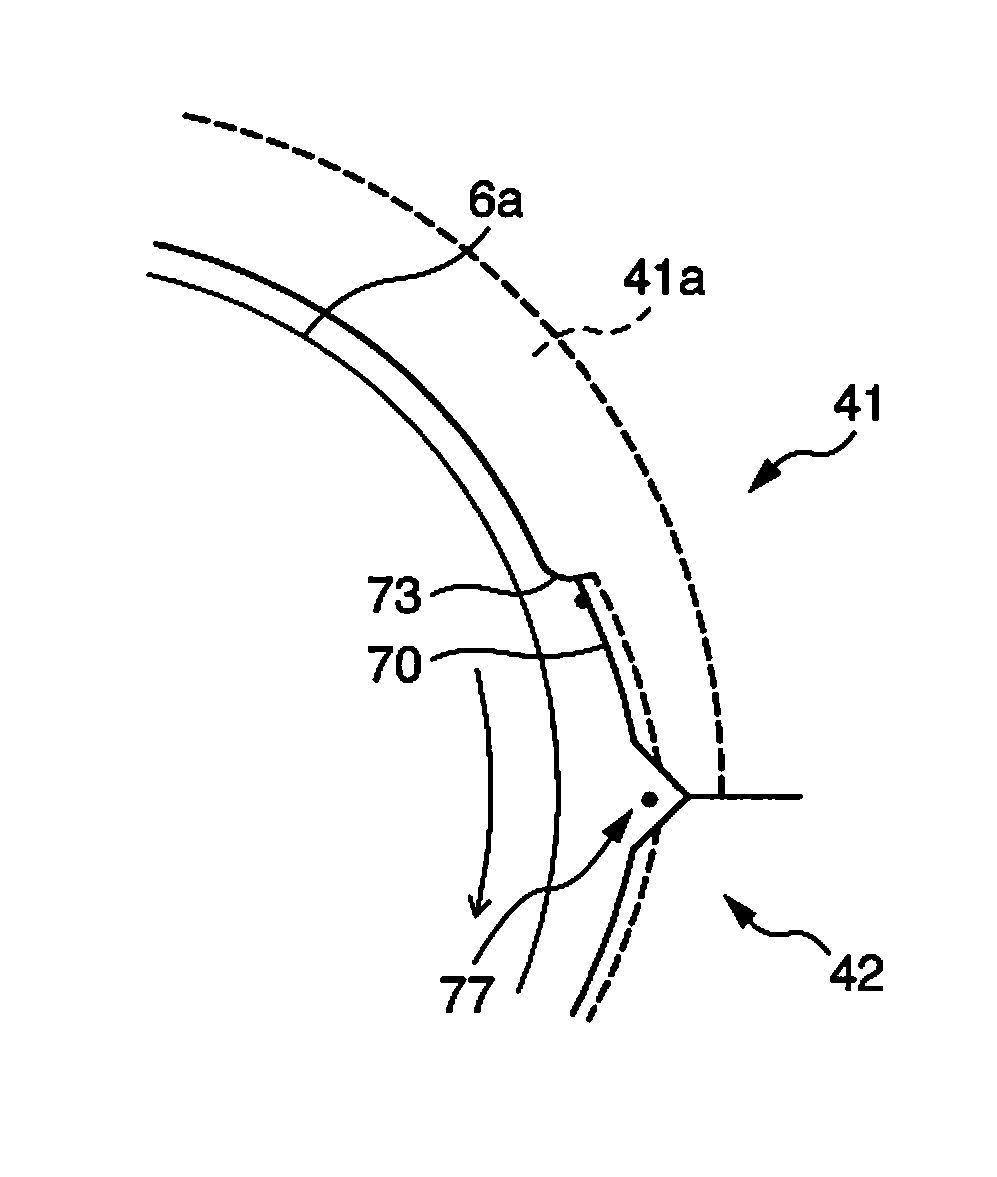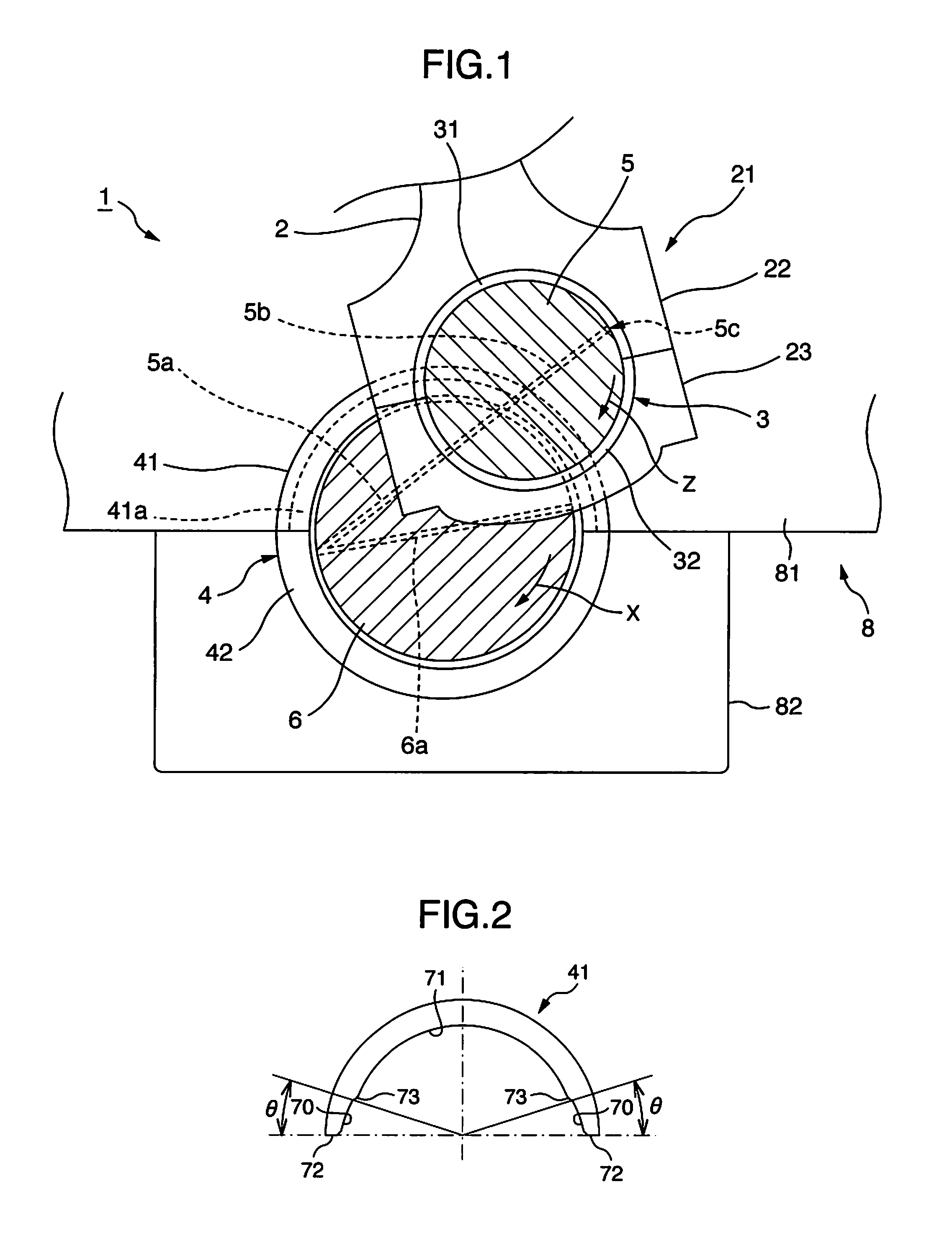Main bearing for crankshaft of internal combustion engine
a technology for internal combustion engines and bearings, which is applied in the direction of sliding contact bearings, mechanical equipment, rotary machine parts, etc., to achieve the effect of excellent foreign matter discharging efficiency
- Summary
- Abstract
- Description
- Claims
- Application Information
AI Technical Summary
Benefits of technology
Problems solved by technology
Method used
Image
Examples
embodiment 1
[0055]As is understood from FIGS. 3 and 5, the oil groove 41a which is formed on the inner circumferential surface of the half bearing 41 is formed to extend through the central portion in the circumferential direction, and open to both end surfaces 72 in the circumferential direction of the half bearing 41. A depth of the oil groove 41a is constant throughout an entire length in the circumferential direction of the oil groove 41a. Note that in the main cylinder portion 71, the depth of the oil groove 41a mentioned here refers to a depth to an oil groove bottom surface from an inner circumferential surface of the main cylinder portion 71, whereas in the crush relief portion 70 and the transition region 73, the depth of the oil groove 41a refers to a depth from a virtual inner circumferential surface 71v in the case in which the crush relief portion 70 and the transition region 73 are not formed.
[0056]As is understood from FIG. 3, the oil groove 41a is disposed in a center of a width...
embodiment 2
[0084]As shown in FIGS. 12 and 13, unlike the one half bearing 41 of embodiment 1, the oil groove 41a is formed in such a manner that a depth from the main cylinder surface becomes maximum in the central portion in the circumferential direction of the half bearing 41, and becomes gradually smaller toward both end portions in the circumferential direction. Both end portions in the circumferential direction, of the oil groove 41a are positioned in the crush relief portion 70, and on a front side from the end portion in the circumferential direction of the oil groove 41a, a surface of the crush relief portion 70 having a plurality of crush relief grooves is formed. The other configuration is the same as the configuration of the half bearing 41 of embodiment 1.
[0085]In embodiment 2, as shown in FIG. 13, in the crush relief portion 70 of the other half bearing 42 which is paired with the one half bearing 41, a plurality of crush relief grooves 75 extending in the circumferential directio...
PUM
 Login to View More
Login to View More Abstract
Description
Claims
Application Information
 Login to View More
Login to View More - R&D
- Intellectual Property
- Life Sciences
- Materials
- Tech Scout
- Unparalleled Data Quality
- Higher Quality Content
- 60% Fewer Hallucinations
Browse by: Latest US Patents, China's latest patents, Technical Efficacy Thesaurus, Application Domain, Technology Topic, Popular Technical Reports.
© 2025 PatSnap. All rights reserved.Legal|Privacy policy|Modern Slavery Act Transparency Statement|Sitemap|About US| Contact US: help@patsnap.com



